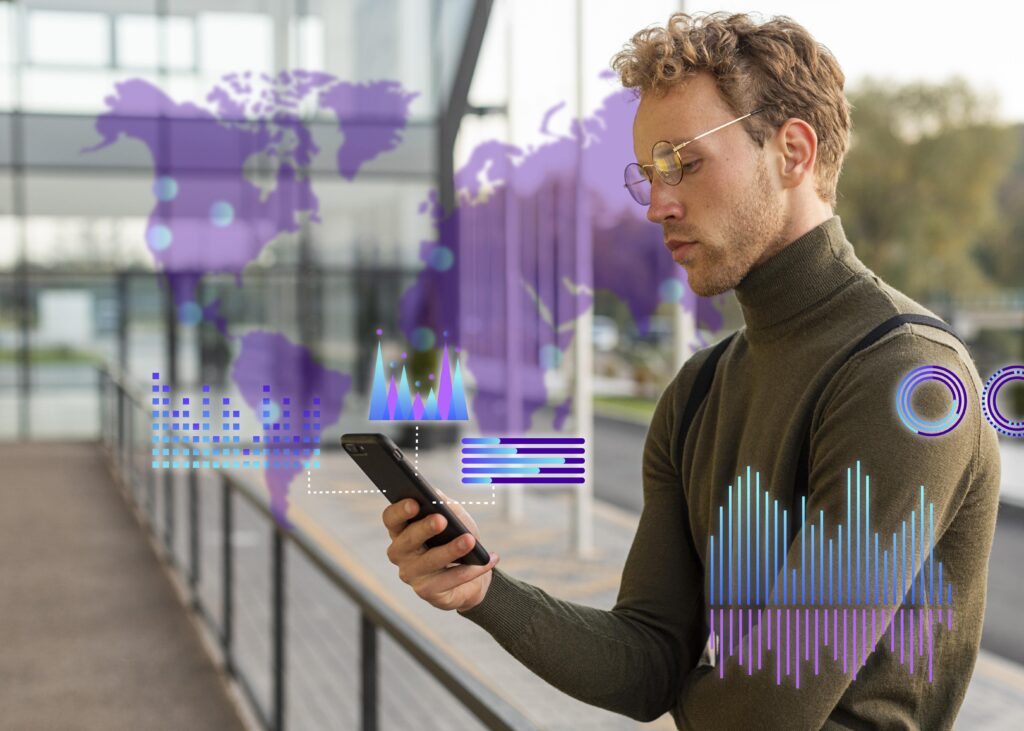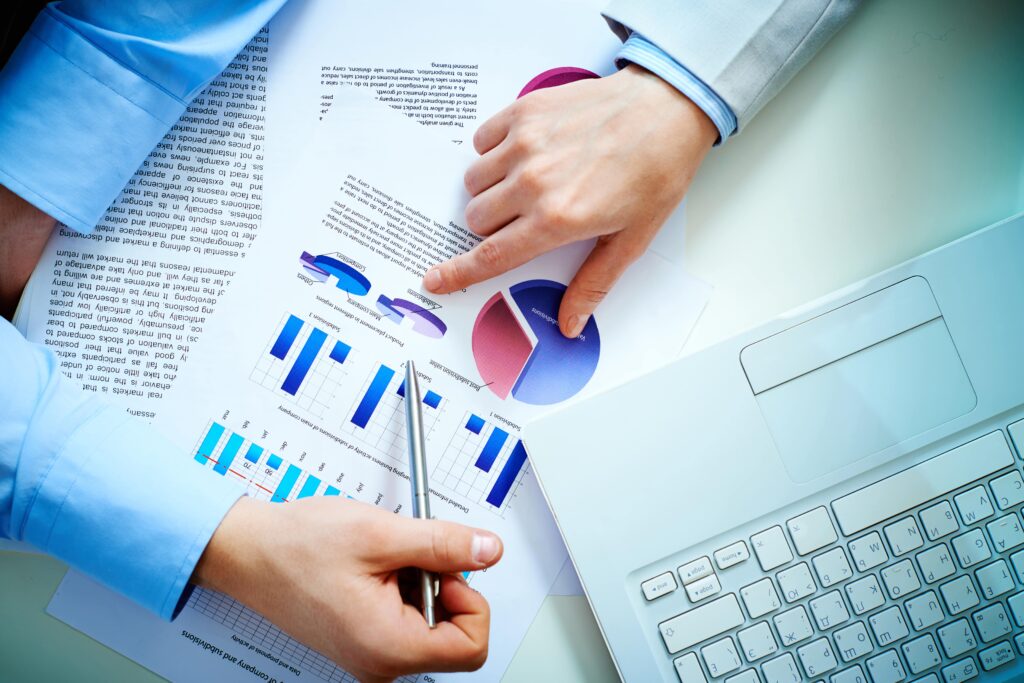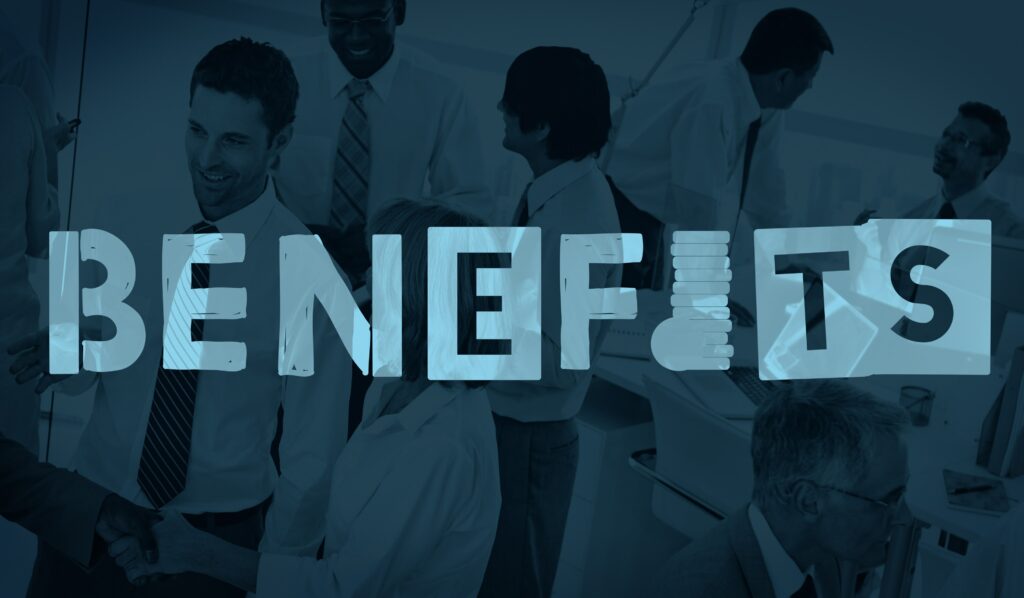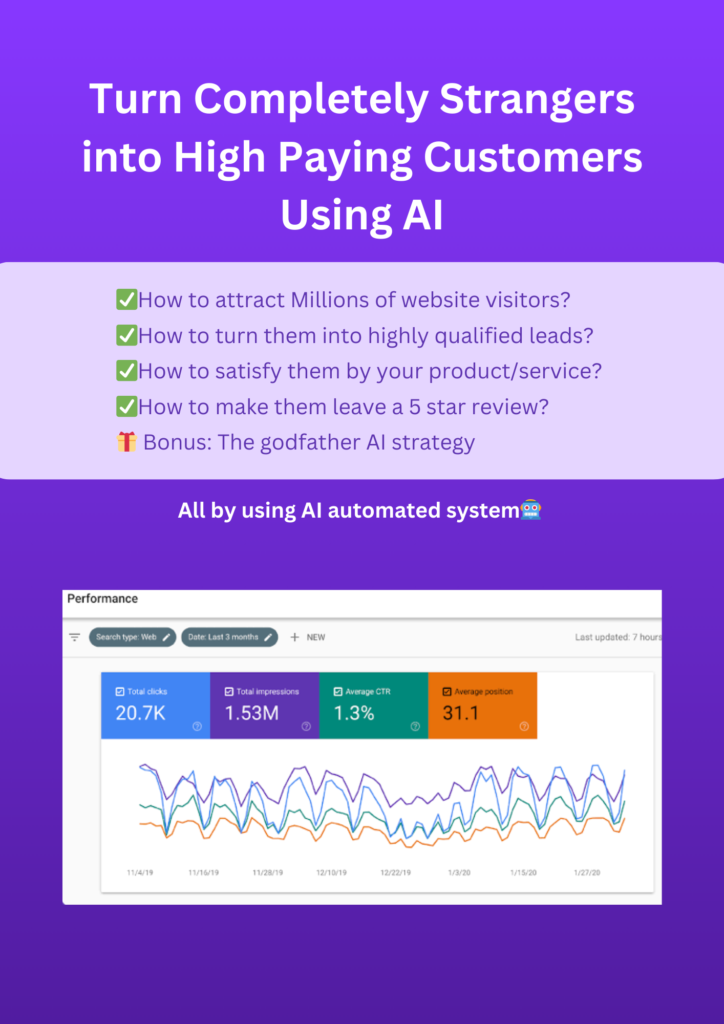What is AI Forecasting?

AI forecasting, or artificial intelligence forecasting, basically involves using advanced machine learning and data analysis techniques to predict things that are going to happen in the future.
It’s like having a super-smart computer that looks at a bunch of past data, spots trends, and then tells you what’s likely to come next.
This cool tech is used in all sorts of areas, like finance, weather predictions, managing supply chains, figuring out how much stuff to make and sell, and more.
So, instead of making decisions based on guesswork, companies and organizations use AI forecasting to make smarter choices.
It helps them plan better, reduce risks, and get a leg up on the competition by knowing what’s around the corner.
In short, AI forecasting is a game-changer that gives us a sneak peek into the future!
Mayo Clinic uses AI Forecasting for Smarter Healthcare
Imagine a big healthcare place like Mayo Clinic.
They use AI to guess how many patients they’ll have and what they’ll need.
They look at past patient info, see if there are any patterns (like more people getting sick in winter), and use all that to guess how many patients will show up at different times.
This helps Mayo Clinic be smart about things.
They can make sure they have enough doctors, equipment, and stuff like that ready when people need it.
So, it’s like making sure they’re all set to take care of patients well and not waste money.
AI in healthcare makes everything work smoother and helps folks get better care.
If you want to know more about How Mayo Clinic uses AI – Click here
How does AI Forecasting work?

AI forecasting leverages historical data and machine learning models to analyze patterns and make predictions about future events or trends.
The accuracy and reliability of these predictions depend on the quality of the data, the choice of the model, and the ongoing monitoring and updating of the forecasting system.
Here’s a simplified explanation of how it works:
It digs into the past, looks at how things went down, and uses fancy math and machines to figure out what’s likely to happen in the future.
First, it gathers up all the old data and makes sure it’s squeaky clean.
Then, it picks the perfect brainy model, like those time-traveling ones or the neural network wizards.
These models learn the ropes, like spotting trends and patterns.
You double-check their skills with fresh data and, once they’re sharp, they start making predictions.
But here’s the catch: it’s not a one-time show; you’ve got to keep them updated with the latest data scoop.
And those predictions?
They’re like your secret weapon, helping you make clever moves, whether it’s investing smartly in finance or running a tight ship in the supply chain.
Types of AI Forecasting

So, there are several types of AI forecasting, each tailored to specific domains and scenarios. Some common types include:
Time Series Forecasting: This one’s all about guessing what’s going to happen next in a sequence, like predicting future stock prices, weather changes, or how well a product will sell.
Regression Forecasting: When you want to predict numbers, like how much money someone might make based on things like their education and work experience, you use regression models.
Classification Forecasting: If you need to sort things into categories, like deciding whether an email is spam or not, AI can do that too.
Text Forecasting: When AI looks at words, it can tell you things like the overall sentiment of customer reviews or even predict how the stock market might react to news.
Image Forecasting: AI can also check out pictures and figure out stuff from them, like spotting defects in manufacturing by looking at images from quality control cameras.
Anomaly Detection: This one’s like having a radar for weird stuff in data. It’s super useful for catching fraud, keeping networks secure, or making sure products meet quality standards.
Demand Forecasting: Businesses use AI to guess how much of their product people will want in the future. It helps them plan things like how much to make and how to price it.
Financial Forecasting: In the finance world, AI works hard to predict stuff like stock prices, currency exchange rates, and how well your investments are doing.
Weather Forecasting: You know those weather apps? They rely on AI to crunch tons of data and tell you if you need an umbrella tomorrow.
Sales and Revenue Forecasting: Companies use AI to guess how much money they’ll make in the future. It helps them make decisions about stuff like how much stock to keep and how to set prices.
How to Use AI Forecasting in Business? Step-by-step Guide

Step 1: Define Your Mission
Start by having a clear mission in mind. What’s the big thing you want to predict? Is it sales, customer behavior, or something else? Knowing your mission is like setting the GPS for your AI adventure.
Step 2: Data Treasure Hunt
Now, it’s time to go on a data treasure hunt! Gather up all the historical data you need. Make sure it’s super clean and complete. Good data is like the fuel for your AI engine.
Step 3: Picking Your AI Superhero
Choose the AI model that suits your data and mission. Think of it as picking the superhero with the right powers for the job. You’ve got options like time series models (like ARIMA or Prophet), regression models, neural networks, and decision trees. The choice depends on your data’s nature and complexity.
Step 4: Data Prep Party
Get your data ready for the big show. Clean up any mess, handle missing bits, and maybe even change its outfit a bit. You want your data looking sharp!
Step 5: Splitting Secrets
Divide your data into two secret agent teams: one for training and one for testing. The training team teaches your AI, while the testing team checks if it’s learning well. Typically, a common split is 70% for training and 30% for testing.
Step 6: AI Training Camp
Time for AI training camp! Your model learns the ropes from the training data. It’s like teaching a dog new tricks, but with numbers.
Step 7: Showtime Evaluation
Put your model to the test using the testing data. You’ll be the judge and see how well it performs. Lower errors mean your model’s a rock star. Common evaluation metrics include Mean Absolute Error (MAE), Mean Squared Error (MSE), and Root Mean Squared Error (RMSE). A lower error indicates better performance.
Step 8: Fine-Tuning Magic
If your model isn’t nailing it, don’t worry. You can fine-tune it by tweaking settings or trying different tricks. It’s like giving your car a tune-up for a smoother ride.
Step 9: Launch the AI Rocket
Once your model shines, it’s time to launch it into action. Plug it into your business, and let it make real-time predictions or periodic forecasts.
Step 10: Keep an Eye Out
Keep a close watch on your model in action. Update it as new data rolls in to keep it sharp and accurate. It’s like taking care of a high-tech garden.
Step 11: Decode Insights and Take Charge
Understand what your AI is telling you. Use those insights to make smart moves in your business. It’s like having a crystal ball for decision-making.
Step 12: Supercharge and Expand
As you get the hang of AI forecasting, think about using it in more places where predictions can make a big impact. It’s like discovering a superpower that can help your whole business soar!
Benefits of using AI Forecasting in Business?

Smart Choices with AI Insights: AI forecasting gives you the inside scoop on future trends, helping you make savvy decisions about where to invest your resources, how to manage your stock, fine-tune your marketing, and much more. It’s like having a crystal ball for your business, boosting efficiency and profits along the way.
Customer Happiness on Autopilot: Ever wish you could read your customers’ minds? Well, AI forecasting gets pretty close! It helps you predict what they want and need, so you can tailor your products and services to blow their minds. Happy customers mean loyalty, and loyalty means success.
Cost-Cutting Made Easy: AI forecasting doesn’t just crunch numbers; it’s your budget’s best friend. By helping you avoid stock blunders and supply chain snafus, it trims the fat from your expenses, slashes waste, and supercharges your efficiency.
Stay One Step Ahead in the Game: Imagine always being one step ahead of your competitors. With AI forecasting, that’s a reality. It’s like having a secret weapon that keeps you agile in a fast-moving business world, letting you seize opportunities and navigate changes like a pro.
AI: Your Business Lifesaver: AI forecasting isn’t just about predicting profits; it’s your safety net. It spots potential risks and challenges on the horizon, giving you time to craft backup plans. It’s your guardian angel against economic bumps, supply chain hiccups, or unexpected shifts in the market. In short, it’s your ultimate risk-management ally.
Limitations of AI Forecasting

Data Goldmine or Data Dilemma: Your AI forecasts are only as good as the data you feed them. If you don’t invest in gathering, cleaning, and maintaining your data, you might as well flip a coin for decisions!
Curveballs and Contingencies: AI models can’t predict the unexpected. It’s like trying to forecast the weather during a tornado. To stay ahead, pair your AI forecasts with backup plans and human smarts for when chaos strikes.
The Mystery Inside the Machine: AI models can be a bit like a magician with a hidden trick. To trust their forecasts, you need to know how they work. It’s like asking the magician to reveal the secret behind the illusion.
Data Potholes and Oddities: Incomplete or messed-up data can throw a wrench into your AI’s gears. It’s like trying to bake a cake with missing ingredients. To keep things reliable, you need solid data collection and validation processes.
Ethics and Privacy Tightrope: When you’re dealing with sensitive data, you’ve got to be the guardian of ethics and privacy. Mess this up, and you’re in hot water, legally and reputation-wise. It’s like walking a tightrope; one misstep, and you’re in freefall.
Real world Examples of AI Forecasting
Weather Soothsaying with AI: When it comes to predicting the weather, AI is the modern-day wizard. Meteorological agencies rely on AI to sift through heaps of data, like past weather records, satellite snapshots, and atmospheric measurements. With this info, AI can spin its magic and tell us what the weather will be like – whether it’s sunny or rainy, windy or calm. And guess what? This isn’t just for small talk; it’s a big deal for farming, disaster prep, travel plans, and more!
Stock Market Clues from AI: Ever wondered how financial experts make stock market predictions? Well, they’ve got a digital sidekick – AI! AI crunches numbers from the stock market’s past, checks out the news buzz, and looks at financial signals to make educated guesses about where stock prices might go. Now, keep in mind that the stock market can be a bit like a rollercoaster, but AI helps folks make smarter choices with their investments. Here’s a comprehensive guide about How AI helps to predict stock market?
Retail Crystal Ball – AI Demand Forecasting: Imagine a crystal ball for retailers, but instead of magic, it’s AI doing the prediction. Retailers use AI to figure out what you and I are going to buy next. It peeks at past sales, considers things like seasons, marketing tricks, and even economic ups and downs. This helps them stock the right amount of stuff on the shelves, avoid overstocking or running out of goodies, and even tweak prices on the fly. It’s like having a retail Jedi to balance the supply and demand force!
Future of AI Forecasting
The future of AI forecasting looks promising. We’re getting more transparent AI models, which means we can trust their predictions better. AI itself is getting smarter, with improved accuracy. It’s not just for tech anymore; it’s moving into healthcare, energy, and more. But ethics and privacy are a big deal too, and we’ll see rules to keep things fair and safe. In a nutshell, AI forecasting is headed for more accuracy, transparency, and responsibility.
What’s the difference between AI Forecasting & Predictive Analytics
AI forecasting and predictive analytics are like cousins in the data world. They’re similar but have their own specializations.
AI forecasting is all about using smart computer tricks, like artificial intelligence and machine learning, to guess what’s coming up next based on past info.
Think predicting sales or stock prices.
Predictive analytics, on the other hand, is the big sibling that covers a wider range of fortune-telling techniques.
It doesn’t just stop at numbers; it can predict all sorts of things and is handy in fields like marketing, finance, and healthcare.
So, while AI forecasting is part of the predictive analytics gang, predictive analytics invites other statistical methods to its prediction party, making it a bit more versatile.
Conclusion
So, to sum it up, AI forecasting is a real game-changer for businesses and organizations.
It’s uses artificial intelligence and fancy math to make predictions based on past data.
Whether you’re trying to manage your supplies, understand your customers, or figure out stock prices, AI forecasting gives you a sneak peek into the future.
It helps you make smarter decisions, avoid risks, and stay ahead of the competition.
Of course, it’s not a walk in the park – you need good data, and it can’t predict crazy unexpected stuff.
Plus, ethics are a big deal. But as technology keeps evolving, AI forecasting is getting even better.
It’s becoming more accurate, transparent, and responsible, and it’s becoming a must-have tool for businesses in our ever-changing world. Exciting times ahead!

